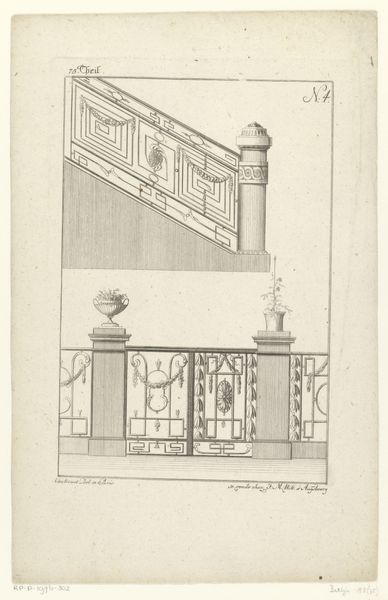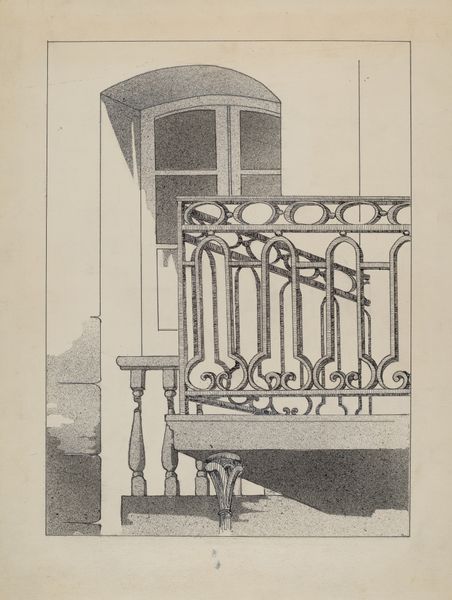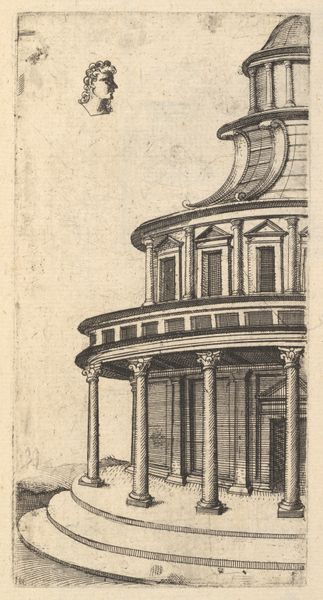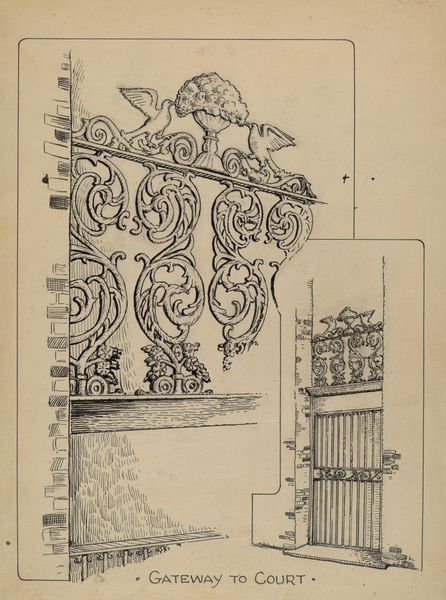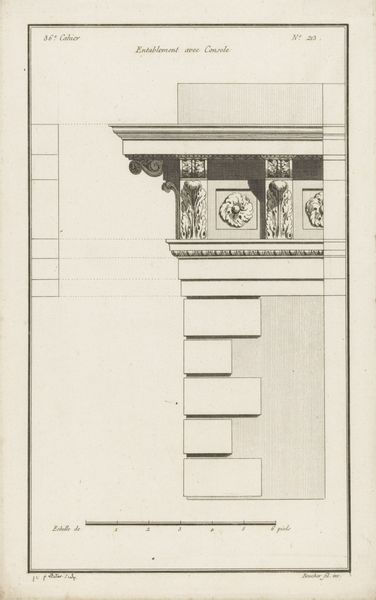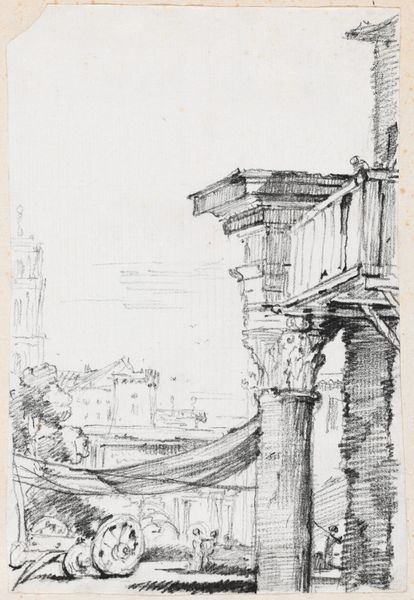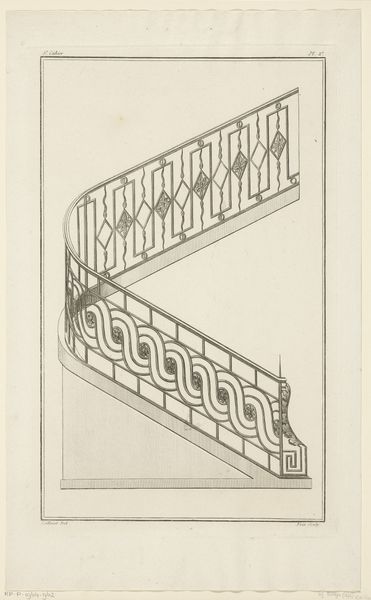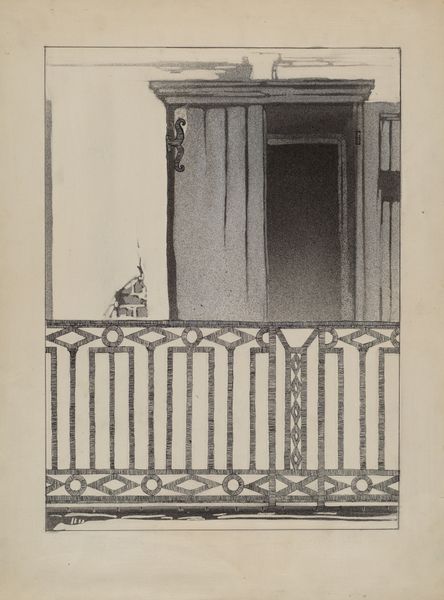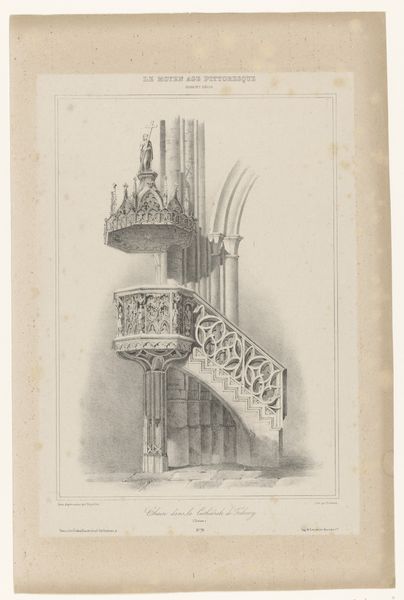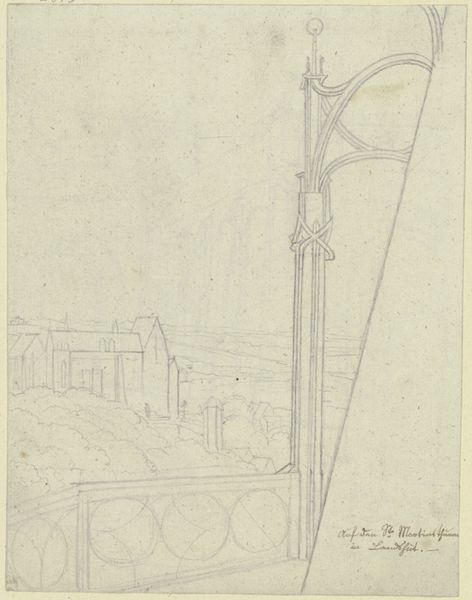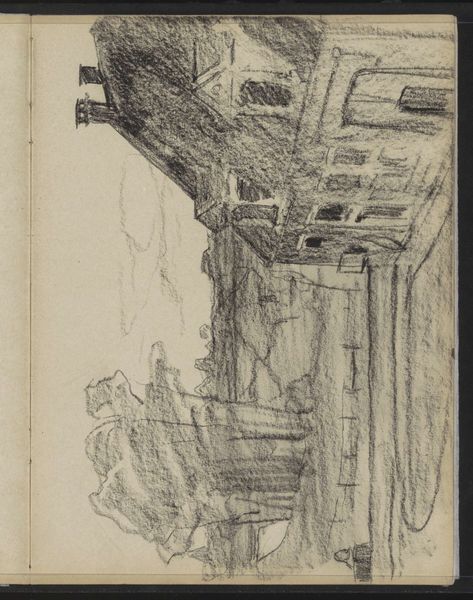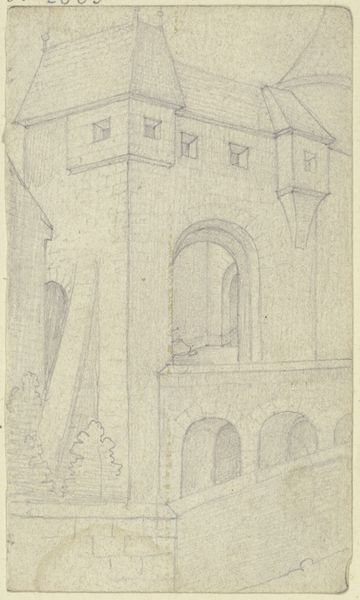
drawing, pencil, architecture
#
architectural sketch
#
drawing
#
aged paper
#
toned paper
#
quirky sketch
#
sketch book
#
personal sketchbook
#
idea generation sketch
#
sketchwork
#
geometric
#
pencil
#
sketchbook drawing
#
cityscape
#
storyboard and sketchbook work
#
architecture
Dimensions: overall: 30.4 x 22.7 cm (11 15/16 x 8 15/16 in.)
Copyright: National Gallery of Art: CC0 1.0
Curator: This drawing, entitled "Wrought Iron Railing," dates to around 1936 and appears to be rendered in pencil on toned paper. The artist, Thomas Byrne, captured what seems like a glimpse of a cityscape. What strikes you upon seeing it? Editor: Initially, I see a city steeped in history, rendered in a style evocative of architectural documentation. Yet, there is an undeniable stillness and feeling of being frozen in time. Curator: Indeed. Byrne's compositional choices lead the eye upward. Note how the precise lines defining the wrought iron create a compelling interplay of verticality and curvature. The architectural details, particularly the lamp post and the balcony, provide a visual rhythm. Editor: Looking closer, it also highlights urban divides. Wrought iron, signifying luxury, contrasts with what is "Conway's Court." It seems to gesture towards a segregation coded in urban planning. Can we know about Byrne’s socioeconomic position and what it afforded him to capture only specific details of the place in question? Curator: That is certainly an interesting contextual avenue. The focus is on line and form; the geometric exactness juxtaposed with the more organic feel of the aged paper itself creates a striking tension within the picture plane. He seems more fascinated by how light creates visual textures than on delivering a specific political argument, though I agree his choice to showcase one over another building certainly tells a deeper story than is visually represented. Editor: The seemingly simple image encapsulates the era's broader dialogues about urban design, class, and power dynamics. In an era marked by increasing inequalities, his work provides an opportunity to explore social stratifications inherent in urban landscapes. It offers layers of urban life worth exploring, prompting inquiries into how these realities persist to this day. Curator: From my point of view, while context does add dimension to its meaning, there's no denying the intrinsic harmony and visual appeal independent of sociopolitical subtext, giving more weight to what he chose to highlight aesthetically. The piece offers a certain formal pleasure, don't you think? Editor: I believe these are all interconnected rather than binary aspects that the picture invites us to unravel; seeing aesthetics as separate would ignore what seems clear regarding societal dynamics back then. Ultimately, “Wrought Iron Railing” speaks volumes—if one pauses long enough to listen. Curator: I concur; let's allow listeners to keep analyzing its many layered depths.
Comments
No comments
Be the first to comment and join the conversation on the ultimate creative platform.
